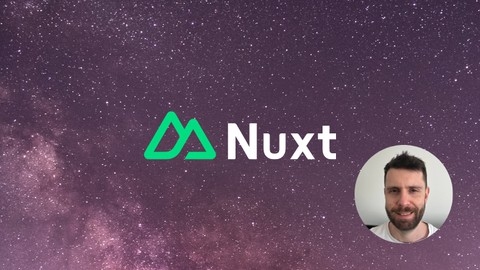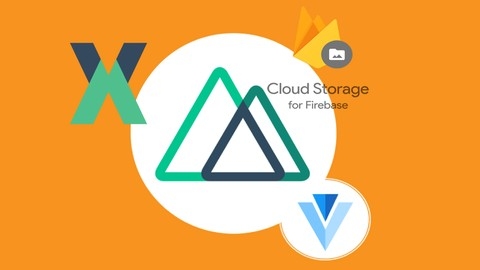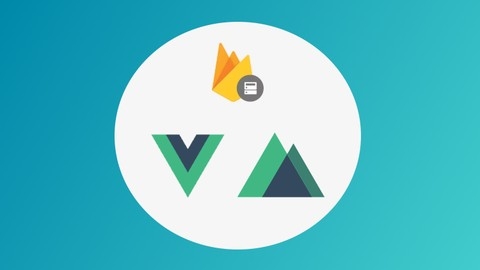Nuxt.js is a powerful framework built on top of Vue.js, known for accelerating web development with features like server-side rendering and a streamlined development experience.
It’s a popular choice for building complex, performant web applications and even static websites.
Learning Nuxt.js can help you create user-friendly, SEO-friendly web apps, and open doors to exciting career opportunities.
Finding the right Nuxt.js course on Udemy can feel overwhelming with so many options available.
You’re looking for a course that provides a solid foundation in Nuxt.js fundamentals, offers practical projects to reinforce learning, and is taught by experienced instructors who can guide you through the complexities of the framework.
Based on our analysis, Nuxt.js 2 - Vue.js on Steroids stands out as the best overall course on Udemy for Nuxt.js.
This course covers a comprehensive range of topics, from building your first Nuxt.js app to integrating with Firebase, Vuex, and handling authentication, all while building real-world applications.
The instructor’s clear explanations and hands-on approach make learning enjoyable and effective.
While Nuxt.js 2 - Vue.js on Steroids is our top pick, we understand you might have specific needs or preferences.
There are other excellent courses available on Udemy, each with its own focus and teaching style.
Keep reading to explore our detailed recommendations for beginner-friendly courses, advanced topics like Nuxt 3, and courses focused on specific project types or integration with other technologies.
Nuxt.js 2 - Vue.js on Steroids
The course starts by introducing you to Nuxt.js, a powerful framework that enhances Vue.js development with features like server-side rendering.
You’ll quickly learn how to create your first Nuxt app and understand its folder structure.
From there, the course dives into pages, routing, and views.
You’ll learn how Nuxt automatically sets up routes based on your folder structure, making it incredibly easy to create complex routing setups.
The course covers creating dynamic routes, nested routes, and adding links for navigation.
You’ll also learn about layouts, error pages, and working with components in Nuxt apps.
One of the key aspects covered is handling data in your Nuxt app.
You’ll learn how to use asyncData to fetch data on both the client and server-side, leveraging the power of server-side rendering.
The course also guides you through integrating Vuex, the official state management library for Vue.js, into your Nuxt app.
As you progress, you’ll connect your Nuxt app to a backend using Firebase.
This involves storing and fetching data from Firebase, initializing the Vuex store with server-side data, and synchronizing changes between Vuex and the backend.
The course also covers advanced topics like configuring Nuxt projects, adding plugins and modules, and implementing middleware for authentication.
You’ll learn how to add user signup, login, and logout functionality, as well as persisting authentication across page refreshes using cookies.
Finally, you’ll explore different ways to build your Nuxt app, including as a universal app, a single-page application (SPA), or a static website.
The course guides you through the process of building, optimizing, and deploying each type of app.
The Nuxt 3 Bootcamp - The Complete Developer Guide
The course covers building a full-featured car listing application using Nuxt 3, the latest version of the popular Vue.js framework for server-rendered applications.
You’ll start by creating the user interface elements like the navbar, home hero section, search bar, sidebar, and car cards.
This hands-on approach will teach you how to build reusable components using Vue’s composition API.
The course then dives into Nuxt’s file-based routing system, showing you how to create static, dynamic, and nested routes.
You’ll also learn about layouts, which allow you to define common UI elements across multiple pages.
Error handling is crucial for any production application, and this course covers it extensively.
You’ll learn how to handle client and server errors gracefully using Nuxt’s built-in utilities like useError and NuxtErrorBoundary.
The syllabus also covers important topics like state management using Nuxt’s useState composable and the popular Vueuse library.
You’ll learn how to optimize images with NuxtImg and force client-side rendering when needed.
Authentication is a must-have feature for most modern web apps, and this course teaches you how to implement it using Supabase and Google OAuth.
You’ll also learn about Nuxt’s middleware system, which allows you to protect routes based on the user’s authentication status.
Building server endpoints and making HTTP requests are essential skills for any web developer, and this course covers them in-depth.
You’ll learn how to create server endpoints, extract path and query parameters, and fetch data from the client.
The course also covers integrating with a PostgreSQL database using an ORM (Object-Relational Mapping) library.
You’ll learn how to create tables, perform CRUD operations, and implement complex filters.
Complete Nuxt.js Course
This course starts by introducing you to Vue and Vue CLI, ensuring you have a solid foundation before diving into Nuxt.js.
You’ll learn how to set up a Nuxt project, understand its file structure, and create layouts, custom error pages, and page layouts.
The course covers essential Nuxt features like plugins, where you’ll learn to use universal CSS, CDNs, UI libraries like Bootstrap Vue, and manage meta information with Vue Meta.
The course dives deep into Vuex integration with Nuxt, teaching you how to use state management effectively.
You’ll also explore Nuxt’s routing system, including nested routes, dynamic routes, transitions, and route validation.
Moving on, you’ll learn about the powerful Nuxt context, which gives you access to various parts of your application, and how to create and use middleware to modify requests and responses.
Crucially, the course covers retrieving data from a backend, using techniques like asyncData, fetch, and nuxtServerInit.
You’ll integrate with an Express backend and learn to use axios for making HTTP requests.
Throughout the course, you’ll build practical projects, reinforcing the concepts with hands-on examples.
The course strikes a balance between theory and practice, ensuring you gain a deep understanding of Nuxt.js while building real-world applications.
Master Nuxt 3 - Full-Stack Complete Guide
The course starts by laying the foundation with Vue.js and Nuxt fundamentals, covering client vs server-side rendering and the power of Nuxt.
You’ll then dive into building a robust Blog and Portfolio site using Nuxt 3.
From routing and UI customization with Tailwind CSS to SEO optimization, you’ll gain practical skills that are in high demand.
The course covers everything from creating pages and layouts to integrating Nuxt modules like Tailwind CSS and Nuxt Content, a static file-based CMS.
One of the highlights is learning to work with Markdown, including handling meta tags, custom pages, typography, images, and code highlighting.
You’ll also learn to query content, use Vue components inside Markdown, and create a blog post list with a sleek design.
The course doesn’t stop there – it guides you through version control with Git and GitHub, culminating in deploying your portfolio project on Vercel.
But the real showstopper is building a full-stack finance tracking app with Nuxt and Supabase.
You’ll learn to create a real-world application with UI components, a real database, authentication, and authorization.
From creating transactions and handling data to implementing forms with validation, you’ll gain a deep understanding of building robust applications.
The course covers Supabase integration, including creating tables, fetching data, and implementing policies for data protection.
You’ll also learn to handle authentication flows, user profiles, and file uploads with Supabase Storage.
Throughout the course, you’ll develop reusable code with composables and tackle real-world challenges like hydration, reactivity, and data issues.
The final step is deploying the finance tracker project on Vercel, ensuring your application reaches a global audience.
Master Nuxt.js - A Vuejs framework by building projects
This course provides a comprehensive introduction to Nuxt.js.
You’ll start by learning the core concepts of Nuxt.js, including its structure, plugins, modules, configuration, layouts, and error handling.
The course covers essential topics like HTML integration, meta tags, routing (including dynamic routing and route parameter validation), and middleware.
After laying the foundation, you’ll dive into building a weather application using Nuxt.js.
This hands-on project will teach you how to fetch data from an API, display dynamic city weather information, incorporate server-side rendering, and utilize environment variables.
Next, you’ll explore state management with Vuex, a crucial aspect of building complex applications.
You’ll learn how to access the Vuex store, use getters, actions, and refactor code for better reusability.
The course then guides you through building a quiz application integrated with Firebase.
You’ll learn how to create questions, store and retrieve data from Firebase, update questions and answers, and implement authentication for an admin section.
Finally, you’ll dive deeper into Firebase authentication, including creating a login form, handling authentication state with Vuex, protecting routes with middleware, and displaying questions on the front-end.
You’ll also learn how to extract components, handle correct answers, and implement client-side notifications.
Throughout the course, you’ll gain practical experience by building real-world applications, ensuring you can confidently develop Nuxt.js applications upon completion.
Mastering Nuxt: Build a Full-Stack CRUD App with Server-Side
You’ll start by learning the fundamentals of Nuxt.js, including its core concepts, architecture, and how it differs from traditional client-side frameworks.
Next, you’ll dive into setting up a new Nuxt.js application from scratch.
You’ll understand the relationship between pages and routing in Nuxt.js, and learn how to run a Nuxt.js application locally while navigating its basic structure.
As you progress, you’ll build a full-stack CRUD (Create, Read, Update, Delete) application using Nuxt.js.
You’ll implement the ‘create’ function and apply principles for viewing, editing, and deleting data within the CRUD application.
To enhance the user experience, you’ll learn responsive design principles to ensure your application adapts to various screen sizes.
Additionally, you’ll integrate Vuetify, a popular material design component library, into your Nuxt.js project, enabling you to utilize its ready-to-use components.
Furthermore, you’ll integrate the Open Weather API into your Nuxt.js application, allowing you to fetch and display real-time weather data.
You’ll also learn about server-side routing in Nuxt.js, which will help you manage API calls and data flow more effectively.
Vue.js Jump-start with Nuxt.js & Firebase
The course starts with an introduction to get you familiar with the topics.
You’ll then jump into getting started, where you’ll learn how to create a new project, set it up, lay the foundation, and work with Vuex store and Firebase.
From there, the real development begins.
You’ll learn how to add user groups, handle forms and user interactions, work with components, and implement form validation.
The course covers user groups in depth, teaching you how to list, update, and delete them.
Authentication is a crucial aspect, and the course dedicates a section to it.
You’ll learn how to set up a signup form, handle the signup process, work with mixins, implement login functionality, and create a dynamic menu based on the user’s authentication status.
The course also covers Firebase rules and user profiles, which are essential for managing access and storing user data.
Moving on, you’ll dive into administration tasks, such as managing administrators, products, uploading images, listing products, and handling product updates and deletions.
The catalog section teaches you how to create a product catalog, implement search and sorting functionality, and build a dedicated product page.
Shopping cart functionality is a significant part of any e-commerce application, and this course covers it in detail.
You’ll learn how to build the cart, handle various cart-related operations, and implement the checkout process.
Additionally, the course covers local storage, which is useful for enhancing the user experience by persisting data locally.
Finally, you’ll learn about server-side rendering with Nuxt.js, which is essential for improving performance and SEO.
Headless Prestashop with Nuxt JS
The course starts by guiding you through setting up the development environment, including installing the Prestashop REST module and exploring the REST API with Nuxt.
You’ll learn to create a new Nuxt project tailored for the Prestashop backend and set up Pinia for state management.
The course dives into building the user interface, covering routing, layouts, and integrating Bootstrap for styling.
You’ll create dynamic components like the header and menu, leveraging Pinia for data handling.
Moving on, you’ll learn about API and data management, implementing API handler classes and querying diagrams.
The design aspects are covered thoroughly, with lectures on creating a banner component, setting up internationalization (i18n) for multiple languages, displaying product thumbnails, and adding Google Fonts.
Translation is a key focus, with components for handling translations, refactoring dropdowns and stores for translation persistence, and supporting multi-language API calls.
Search integration is another major topic, including building the search UI, API integration, suggestions, result pages, filters, and TypeScript integration.
The product details page is explored in-depth, covering image carousels, quantity controls, stock status, product options, size/color selection, price display, and the add-to-cart functionality.
As you progress, you’ll learn about customer accounts, authentication, input validation, error handling, persisting user sessions, and implementing logout.
The checkout process is covered extensively, including order history, account information editing, route middleware, cart optimization, shipping addresses, carrier selection, payment options, and confirmation messages.








